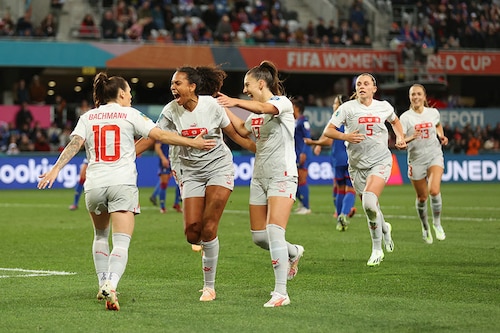How women in sports are forever playing catch-up
The fight for equal pay in sports has spanned generations and disciplines. Despite the victories that women have notched up, there are miles to go


The International Cricket Council (ICC) has recently announced equal prize money for both men’s and women’s teams at ICC events. It’s a historic step given the pay gulf that exists between the two genders.
Consider that England won $1.6 million in prize money for winning the men’s T20 World Cup, while the Australian women’s team won $1 million for the same trophy.
It’s not just in cricket. Pay disparity is a lingering issue across generations and across most professional sports.
For example, the $150 million prize money in the Fifa Women’s World Cup, which began in Australia and New Zealand on Thursday, is a 300 percent hike over its 2019 edition. But it still remains only about a third of the $440 million that the men got in the Qatar World Cup last year.
According to Basketball Reference, in 2021-22, NBA players earned an average of $5.3 million a year, with superstars like Stephen Curry making $45.7 million. In comparison, the Women"s NBA players earned an average of $130,000 a year with the highest-paid players making about $230,000.
Tennis player Naomi Osaka, Forbes’ highest-paid woman athlete in 2022 with $51.1 million, was nearly $30 million short of basketball player Giannis Antetokounmpo, who was ranked 10th on the overall list.
A 2021 study by the BBC found that male professional golfers in 2014 earned an average of $1.1 million, while female professionals earned a mere $212,000. That’s a gap of $888,000 by 2021, that gap had increased to $1.25 million.
The fight for pay parity has been a long and arduous one for women. At the forefront of the few victories they’ve notched up is tennis player Billie Jean King.
In 1968, King won the first Wimbledon title of the Open era, bagging a pay cheque of £750 compared to the £2,000 that was received by Rod Laver, the men’s singles champion.
In 1970, King and eight of her compatriots broke away from the mainstream US tennis tour over equal pay demand and created the Virginia Slims Invitational circuit. The move was a precursor to the launch of the Women’s Tennis Association, the modern WTA, in 1973.
A feisty King also forced the US Open to announce equal prize money for men and women in 1973. It was the first among the four Grand Slams to do so.
In recent times, the US women’s soccer team has fought a bitter battle before earning the right to equal pay.
In 2019, the team filed a gender equality lawsuit against its own federation in March 2020, superstar Megan Rapinoe and her teammates wore their warmup jerseys inside out to conceal the crest of the federation, which told the court that the women did not perform jobs requiring “equal skill, effort and responsibility under similar working conditions" compared to the men.
Last year, the lawsuit was settled and, in September, the men’s and the women’s teams signed the collective bargaining agreements, guaranteeing identical pay structures for appearances, tournament victories, revenue-sharing, and also an equitable distribution of World Cup prize money.
There have been some strides made in cricket too as the Board of Control for Cricket in India, the BCCI, brought in pay parity in terms of match fees last year. This means Test match fees for women have been hiked from Rs 2.5 lakh to Rs 15 lakh per match, while ODI and T20I fees have risen from Rs 1 lakh to Rs 6 lakh and Rs 3 lakh, respectively.
In 2022, the New Zealand cricket authorities, too, signed a five-year deal that mandated equal pay for their men and women cricketers.
First Published: Jul 22, 2023, 08:12
Subscribe Now